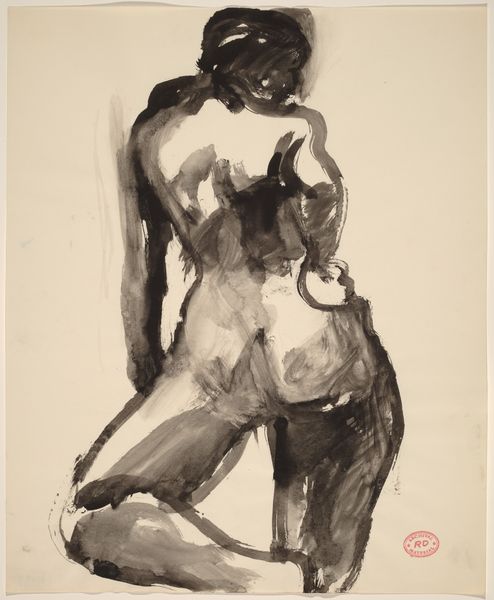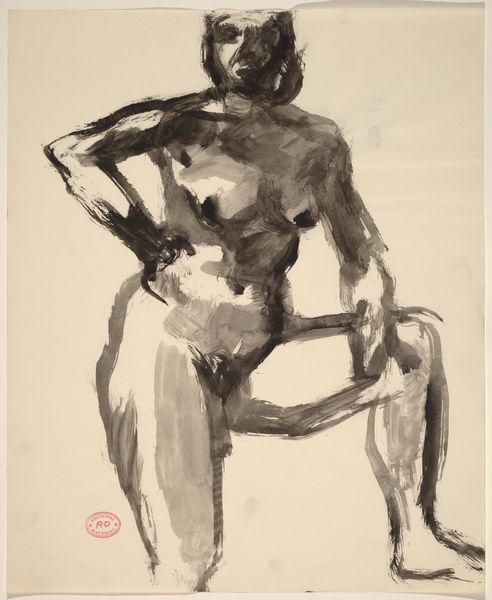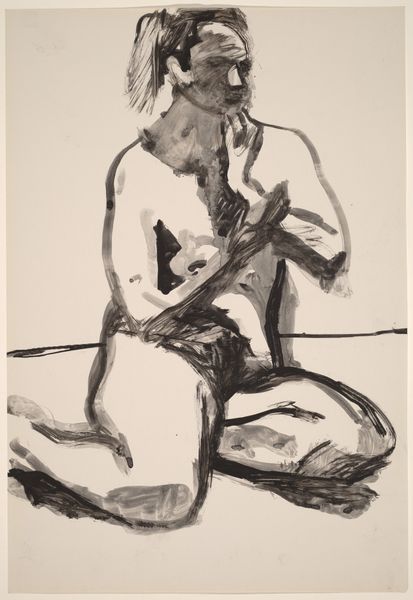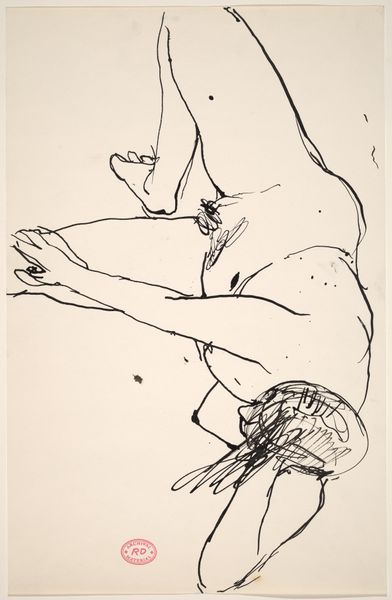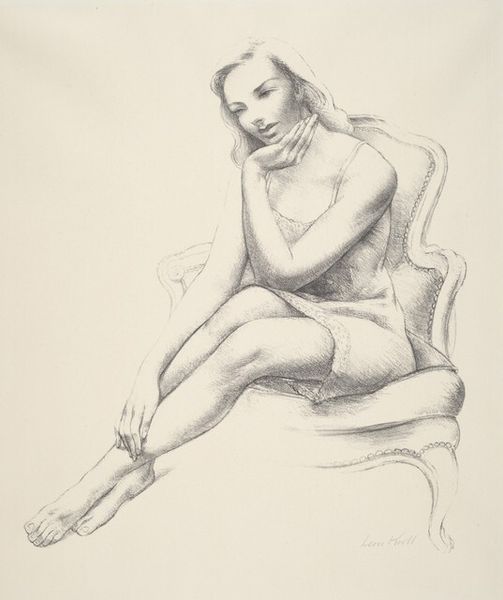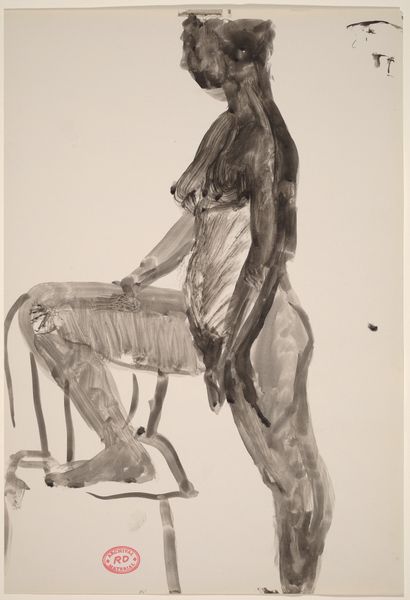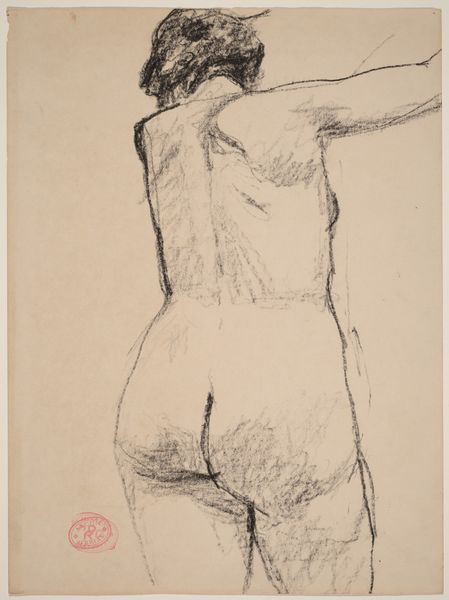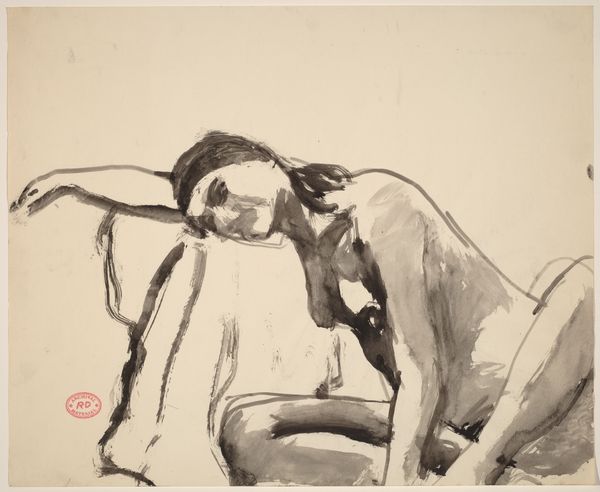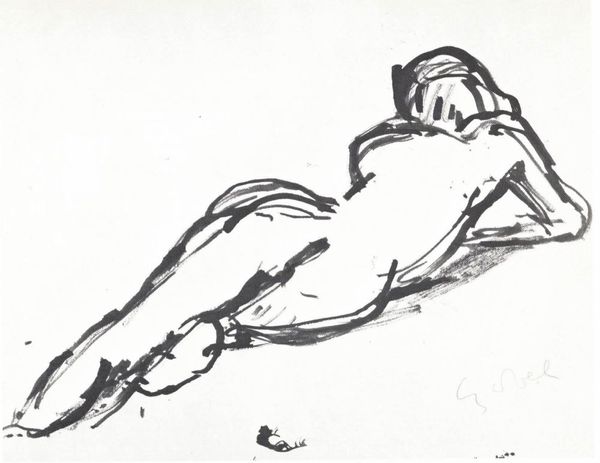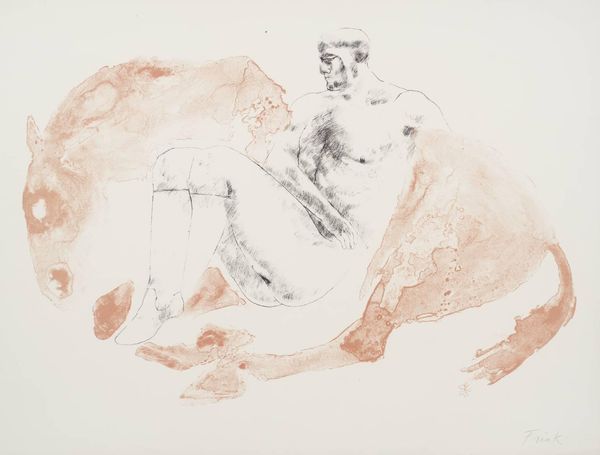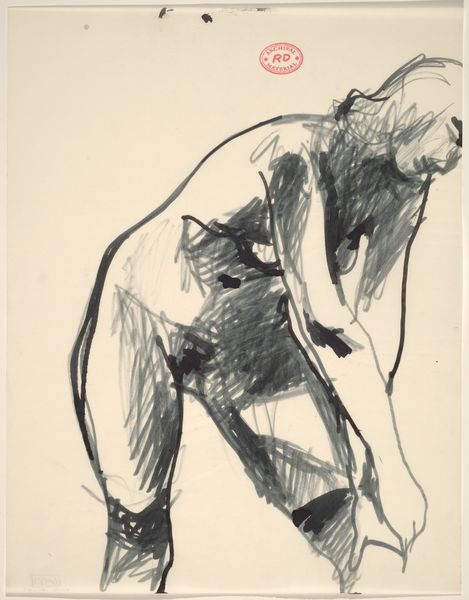
drawing, pencil, graphite, charcoal
#
portrait
#
pencil drawn
#
drawing
#
pencil sketch
#
charcoal drawing
#
pencil drawing
#
pencil
#
graphite
#
charcoal
Copyright: Sa Nogueira,Fair Use
Curator: Well, I am struck immediately by the figure's dynamic pose, but mostly the raw quality of line. Editor: This is “Figure,” a drawing by Sa Nogueira, executed with pencil, graphite and charcoal on paper. There's an interesting dialogue happening here between the constraints and possibilities within those material choices. Curator: Yes, absolutely. It feels both ephemeral and substantial simultaneously. The smudging and layering of the graphite builds this sense of form, of a body pushing against a void. But to me, what is absent is just as important, and feels purposeful. There's labor at play here as well, especially in what appears to be the build up of layered pigment to communicate mass. Editor: Agreed. Consider the historical context. Nogueira's process, her choice of accessible, relatively inexpensive media, particularly given its date, might speak to economic constraints and perhaps a rejection of more traditionally valued art-making materials. Is this in dialogue with social class or educational access at the time? Or does the visible application foreground the art making itself? Curator: I hadn’t considered an explicit critique. But it also can also be viewed from a standpoint of efficient production – where there is a focus on communicating through form rather than the aesthetic properties of fine material. There’s this incredible focus on mass and dynamism of the figure, all delivered with such utilitarian media. Editor: Yes, but who gets to define utility? If the body, as form, takes center stage here, then we must address the politics inherent to bodies in public and private spaces. Is the drawing about the act of representing a body or is it perhaps making a quiet assertion about the power dynamics influencing who and how bodies are seen or not seen? The sketch style may even point to a candid, private observation made accessible and public. Curator: You raise interesting questions around accessibility, and who has the right to capture a body through representation, even a generalized body. It might speak to a need to express beyond traditional institutions. Editor: Well, for me it’s about how the artistic process becomes intertwined with the broader political landscape. By interrogating material choices and artistic representation we uncover stories about society, power, and individual experiences. Curator: I concur. Looking at it now, it underscores the need to re-evaluate how artistic means play an active role in these representations of the body. Editor: Indeed. This artwork is more than the sum of its parts, a nexus of artistry and a statement.
Comments
No comments
Be the first to comment and join the conversation on the ultimate creative platform.
